From Qingdao to Cologne: 50 Masterpieces of East Asian art
The Oriental Endowment for the Promotion of East Asian Art in Cologne celebrates its 50th anniversary with a remarkable exhibition of 50 masterpieces of East Asian art. The exhibition is running at the Museum of East Asian Artꜛ and has now been extended until the end of September 2024. It’s a great opportunity to see some of the most beautiful pieces of East Asian art, covering a wide range of art forms, including ceramics, bronzes, paintings, and sculptures from China, Japan, and Korea. The pieces are drawn from the museum’s collection, which was founded by Hans-Wilhelm Siegel, a German businessman, patron and collector of East Asian art.
 50 Years – 50 Treasures. Exhibition at the Museum of East Asian Art, Cologne, January 19, 2024 to September 29, 2024.
50 Years – 50 Treasures. Exhibition at the Museum of East Asian Art, Cologne, January 19, 2024 to September 29, 2024.
The Oriental Endowment for the Promotion of East Asian Art
The Oriental Endowment for the Promotion of East Asian Art (German: Orientstiftung zur Förderung der Ostasiatischen Kunst) was founded on the profound dedication and extensive collection of Hans-Wilhelm Siegel, a businessman who spent five decades in East Asia. Siegel’s journey began in 1923, spanning China, Hong Kong, and Thailand, where he developed an unmatched expertise and gathered an extraordinary assortment of East Asian art. His collection included archaic Chinese bronzes, early ceramics, and Southeast Asian sculptures — items rarely matched in quality in Western collections.
In 1964, during a conference at the National Palace Museum in Taipei, Siegel crossed paths with Roger Goepper, who was soon to become the director of the Museum of East Asian Art (MOK) in Cologne. This encounter spurred a collaborative vision to showcase Siegel’s impressive collection in Germany. The exhibition “Form and Color” was first displayed in 1972 at the Kölnischer Kunstverein and was a major success, later touring cities like Berlin, Frankfurt, and Zurich.
After relocating to Switzerland, Siegel considered selling a significant portion of his collection. Following intense negotiations that drew interest from museums across the USA, Japan, and Switzerland, the city of Cologne succeeded in acquiring the collection for nearly three million Deutschmarks, thanks to support from the state of North Rhine-Westphalia and the Westdeutscher Rundfunk (WDR).
The acquisition elevated MOK to an international status and led to the establishment of a new museum building in 1977. To manage and further the potential of his collection, Siegel founded the Oriental Endowment for the Promotion of East Asian Art in January 1974. The Endowment initially focused on acquiring additional artworks for the MOK and supporting scientific research in East Asian art. Over time, its mission broadened to encompass the Rautenstrauch-Joest-Museum and also included Southeast Asian art.
Under the guidance of its honorary Board of Directors and Advisory Board, the Endowment has made significant acquisitions, including religious sculptures, imperial porcelains, and significant works of painting and calligraphy from China, all of which are considered among the best in their categories. It also financed scholarly research trips and the publication of dissertations. In 1998, the Endowment expanded its reach to include Japanese art, and recently, in celebration of its 50th anniversary, it has begun to include Korean art.
The impact of Hans-Wilhelm Siegel and the Endowment he created serves as an enduring legacy and a model of civic generosity, inspiring other notable patrons in the Rhineland such as Hans-Jürgen von Lochow, and Peter and Irene Ludwig (Ludwig Stiftungꜛ, Museum Ludwigꜛ). The Oriental Endowment for the Promotion of East Asian Art continues to play a pivotal role in enriching Cologne’s cultural landscape and promoting a deeper understanding and appreciation of East Asian art.

 Exhibition space at the Museum of East Asian Art.
Exhibition space at the Museum of East Asian Art.
50 masterpieces (excerpt)
To give you an impression of the exhibition, here are some of my favorite pieces that I captured during my visits in January and March.
Spindle vases by Young-Jae Lee
The South Korean ceramist Young-Jae Lee came to Germany in 1972. Committed to the ceramic traditions of Korea and the German, her work, characterized by a minimalist style, showcases mastery in pottery, firing, and glazing techniques. Lee’s spindle vases echo the simple elegance of Joseon dynasty’s (1392 to 1910) white wares, revered in China and Japan. These pieces, including a unique green spindle vase, mark the first Korean-related acquisitions by the Orient Endowment, highlighting contemporary contributions to the museum’s ceramic collection.
The vases’ glaze, reminiscent of the jade-like hues of Korean celadon from the Goryeo dynasty (918-1392), features a crystal-like crackle and subtle copper oxide spots, adding individuality to each piece. Despite their identical forms, each vase maintains a sculptural presence, reflecting the Joseon-era ‘moon pots’. Lee’s use of seriality, continuity, and repetition is evident as she presents these vases in pairs, creating a synergistic effect that enhances their artistic expression through minimal variations.

 Young-Jae Lee (*1951), spindle vases, stoneware, clear feldspar glaze, copper oxide splashes.
Young-Jae Lee (*1951), spindle vases, stoneware, clear feldspar glaze, copper oxide splashes.
Guanyin
Guanyin is the East Asian adaptation of the Bodhisattva Avalokiteshvara and one of the people’s favorite deities. With the arrival of Buddhism, his identity often merged with local deities, in China especially with female ones. Seated in the “pose of royal serenity” (rajalalitasana), he is interpreted as the manifestation that resides in his “[Pure LandPure Land”, the mythological mountain Potalaka.

 Figure of Guanyin, wood, color pigments, China, Song/Yuan dynasty, 12th/13th century.
Figure of Guanyin, wood, color pigments, China, Song/Yuan dynasty, 12th/13th century.
Luohan (iron)
Luohan (Sankrit: Arhat) are enlightened beings who have attained the highest level of spiritual development in Buddhism. They are often depicted as monks, and their number varies depending on the tradition. This figure of a Luohan is made of cast iron and dates back to the Ming dynasty, Chenghua period (1465-1487), donated to a temple in Zhending Prefecture in Zhili Province, China. It belongs to a larger group of cast-iron figures that were donated to the temple by various wealthy members of the community and was originally painted in color.
 Figure of a Luohan, iron, China, Ming dynasty, Chenghua period, dated 1487.
Figure of a Luohan, iron, China, Ming dynasty, Chenghua period, dated 1487.
Luohan (earthenware)
Life-size Luohan figures were often placed on the side walls of the cult halls of Chinese Buddhist temples and revered as saints.
 Figure of a Luohan, earthenware, white engobe, color pigments, China, Yuan dynasty, 1279-1368.
Figure of a Luohan, earthenware, white engobe, color pigments, China, Yuan dynasty, 1279-1368.
Judge of Hell
According to Buddhist sutras, a deceased person in hell must give an account of his good and bad deeds before ten judges, the kings of hell. They then decide whether you remain in hell or are reborn. Figures of the kings of hell were set up in temples and shrines in their own halls.
 Judge of Hell, stoneware, colored lead glazes, China, Ming dynasty, Hongzhi/Zhengde period, ca. 1488-1521.
Judge of Hell, stoneware, colored lead glazes, China, Ming dynasty, Hongzhi/Zhengde period, ca. 1488-1521.
Bodhidharma
Bodhidharma (Chinese: Damo), the historical patriarch of Chán Buddhism, is said to have immigrated to China from the west via the Himalayas in the 5th century. According to legend, he created the first tea plant and is also considered the founder of martial arts in the Shaolin monastery.
 Figure of Damo, porcelain, clear glaze, China, Dehua kiln, Ming dynasty, 17th century.
Figure of Damo, porcelain, clear glaze, China, Dehua kiln, Ming dynasty, 17th century.
Daoist immortal
Since the 17th century, porcelain figurines showing Chinese gods have been produced in Dehua (Fujian province), both for domestic altars and for export to Japan and Southeast Asia. The figure shown here most likely represents Zhongli Quan, a general and alchemist of the Han dynasty (206 BC - 220 CE), who retreated to the mountains as a hermit and learned the secret of immortality.
 Figure of a Daoist Immortal, porcelain, clear glaze, China, Dehua kiln, Ming dynasty, 17th century.
Figure of a Daoist Immortal, porcelain, clear glaze, China, Dehua kiln, Ming dynasty, 17th century.
Marco Polo as a Buddhist Saint
In 1849, a hall with 500 gilded clay figures of Buddhist saints was set up in the Hualin Temple in Guangzhou. A bearded man with a hat is said to represent the Venetian Marco Polo. The temple also sold wooden copies of this. The original was destroyed during the Cultural Revolution.
 Marco Polo as a Buddhist Saint, wood, color painting, China, Qing Dynasty, 19th century.
Marco Polo as a Buddhist Saint, wood, color painting, China, Qing Dynasty, 19th century.
Rishukyo-Mandara
The Buddhist sutra of the principle of the perfection of wisdom (Prajñāpāramitā Sūtra) was introduced to Japan from China in the 9th century. The scroll below copies an original from the Kamakura period (1185-1333) and shows eighteen ritual mandalas symbolizing the individual doctrines of the sutra.
 Rishukyo-Mandara, Anonymous painter, scroll painting, ink and colors on paper, Japan, Edo period, 19th century.
Rishukyo-Mandara, Anonymous painter, scroll painting, ink and colors on paper, Japan, Edo period, 19th century.
Portrait of Wu Yihan
On this scroll, the scholar Wu Yihan is sitting under a pine tree in the manner of a Daoist sage, playing a zither and contemplating a waterfall. According to the inscription, he visited the 84-year-old painter Gu Jianlong on a summer’s day, chatted with him until the evening and then asked him to paint this portrait. Seven other scholars have written postscripts on the scroll.
 Portrait of Wu Yihan, Gu Jianlong (1606 - after 1689), horizontal scroll, ink and colors on silk, China, Qing dynasty, Kangxi period, dated 1689.
Portrait of Wu Yihan, Gu Jianlong (1606 - after 1689), horizontal scroll, ink and colors on silk, China, Qing dynasty, Kangxi period, dated 1689.
Tea bowl (ki-seto)
The ‘yellow seto’ (ki-seto) popular in the tea ceremony has been produced on the island of Honshu since the 16th century (not actually in Seto but in Mino). Many manufacturers accentuated the warm yellow glaze with a colored stain.
 Tea bowl, earthenware, iron ash glaze, copper sulphate stain, Japan, Mino kilns, Muromachi/Momoyama period, 16th century.
Tea bowl, earthenware, iron ash glaze, copper sulphate stain, Japan, Mino kilns, Muromachi/Momoyama period, 16th century.
Lidded bowl (Oribe ceramics)
A characteristic of Oribe ceramics is the slight deformation of the vessels, which goes back to the aesthetic concept of ‘wabi-sabi’, in which the imperfect is appreciated. Although the tableware was mass-produced, the potters made sure that pieces were never decorated identically.
 Lidded bowl, stoneware, white engobe, underglaze green and brown, Japan, Mino kiln, Edo period, 17/18th century.
Lidded bowl, stoneware, white engobe, underglaze green and brown, Japan, Mino kiln, Edo period, 17/18th century.
Double gourd bottle
The gourd bottle is an important symbol of Daoist iconography. It is an attribute of the immortals and is said to have medicinal properties. Because its Chinese name hulu sounds similar to fulu (“luck and high rank”), it is considered a lucky charm and was copied in a variety of materials.
 Double gourd bottle, stoneware, black-brown glaze, China, probably Shiwan kiln, Qing dynasty, 18th/19th century.
Double gourd bottle, stoneware, black-brown glaze, China, probably Shiwan kiln, Qing dynasty, 18th/19th century.
Lotus bowl
The Qianlong Emperor was fascinated by the wafer-thin jade works that were sent to him as gifts from the Mughal Empire and the Uyghurs. He wrote 64 poems about his “Hindustan jades” and had them imitated by Islamic carvers in the imperial workshops (zaobanchu).
 Lotus bowl, jade, China, Qing dynasty, 18th/19th century.
Lotus bowl, jade, China, Qing dynasty, 18th/19th century.
Wine holder
The people of the Chang period believed they were descended from a mythical bird deity in the form of an owl. This is why the owl is a common motif on bronzes, jades and ceramics from this period. The curling snakes next to it symbolize rebirth.
 Wine holder, China, Chang dynasty, 13th-12th century BC.
Wine holder, China, Chang dynasty, 13th-12th century BC.
Wine container
The vessel shape is a new creation from the Thou period. It was used to store sacrificial wine and is modelled on the leather drinking bottles of nomadic steppe peoples who gained influence in northern China in the late phase of the dynasty. The lids were probably made of organic material.
 Wine container of the bianhu type. Bronze, copper inserts, China, Eastern Zhou dynasty, 4th-3rd century BC.
Wine container of the bianhu type. Bronze, copper inserts, China, Eastern Zhou dynasty, 4th-3rd century BC.
Kui food vessel
Illustrations on Han-period brick reliefs show the use of vessels as shown below for the preparation of food. They were also used as grave goods. The shape refers to the mythological mountain demon Kui, whose body, according to classical texts, resembles a drum.
 Food vessel, earthenware, green lead glaze, China, Eastern Han dynasty, 1st-2nd century.
Food vessel, earthenware, green lead glaze, China, Eastern Han dynasty, 1st-2nd century.
Jug
The milky blue phosphate streaks were created by spraying an ash-rich mixture onto the dark ground before firing. The resulting fascinating, irregular effects had a great influence on the glazes of the Song dynasty and from there in turn on Japanese ceramics.
 Jug, stoneware, black-brown glaze with light blue streaks, China, Duandian kilns, Tang dynasty, 8th/9th century.
Jug, stoneware, black-brown glaze with light blue streaks, China, Duandian kilns, Tang dynasty, 8th/9th century.
Tea bowl (zhegu bon)
Chinese connoisseurs refer to the magnificent pattern on the inside of the bowl as “partridge feather spots” (zhegu bon). Among the numerous glazes of Song-period tea ceramics, the one shown below is one of the most beautiful. It was prized by the literati, who drank foamed white tea from it, and in Japan by the masters of the tea ceremony.
 Tea bowl, stoneware, black glaze and rust-brown splashes, China, Guantai kiln, Northern Song Dynas, 11th-12th century.
Tea bowl, stoneware, black glaze and rust-brown splashes, China, Guantai kiln, Northern Song Dynas, 11th-12th century.
Pot
This pot demonstrates the high level of skill of Song period ceramists. The effect of the sculptural petal decoration is refined by the deeply incised contours, in which the glaze collects and appears to be shaded.
 Pot, stoneware, carved relief decoration, green glaze, China, Yaozhou kilns, Northern Song dynasty, 10th/11th century.
Pot, stoneware, carved relief decoration, green glaze, China, Yaozhou kilns, Northern Song dynasty, 10th/11th century.
Kinuta vase
The elegant vase type shown below reflects the courtly aesthetics of the Southern Song dynasty. The color and glaze resemble precious jade, and the mallet shape (kinuta) is probably based on Central Asian glass models. Such vases were particularly prized by Japanese masters of the tea ceremony and passed down through many generations.
 Kinuta vase, stoneware, bluish-green glaze, China, Longquen kiln, Southern Song dynasty, 12th/13th century.
Kinuta vase, stoneware, bluish-green glaze, China, Longquen kiln, Southern Song dynasty, 12th/13th century.
Wine goblet
Gu goblets as drinking and sacrificial vessels for fermented drinks already existed in ceramics in some Neolithic cultures in China. The form disappeared after the 10th century BC and was revived 2,000 years later. Since then, they have mostly been used in pairs as flower vases within five-part altar sets.
 Wine goblet of the gu type, bronze, China, Shang dynasty, 13th-12th century BC.
Wine goblet of the gu type, bronze, China, Shang dynasty, 13th-12th century BC.
Katsuma
The katsuma (skt. vajra) is an important ritual device in esoteric Buddhism and protects the four cardinal points. Its origins go back to the ancient Indian tradition, where it is the thunderbolt of the deity Indra. In Shingon Buddhist rituals, it is placed at the four corners of a mandala.
 Katsuma, bronze, fire-gilt bronze, Japan, Edo period, 18th century.
Katsuma, bronze, fire-gilt bronze, Japan, Edo period, 18th century.
Hans-Wilhelm Siegel
Hans-Wilhelm Siegel, a native of Kassel, embarked on a lifelong journey that began in 1923 when he moved to Qingdao, China, at the age of twenty. His initial encounter with East Asian art, a gilded Sino-Tibetan Buddha figure from the 18th century, marked the beginning of what would become a distinguished career as a collector. After briefly studying Chinese history and culture in Berlin, Siegel returned to China to work for German trading companies, setting the stage for his deep dive into the world of art collecting.
 Hans-Wilhelm Siegel in China 1930s, archive of the Museum of East Asian Art. Hans-Wilhelm Siegel (1903-1997) lived in China, Hong Kong and Thailand for 50 years before founding the Orient Endowment in Cologne in 1974 and becoming its first chairman. He was succeeded in office by Peter Ludwig (1994-1997), Erwin Conradi (1997-2007) and Malte Sprenger (since 2008).
Hans-Wilhelm Siegel in China 1930s, archive of the Museum of East Asian Art. Hans-Wilhelm Siegel (1903-1997) lived in China, Hong Kong and Thailand for 50 years before founding the Orient Endowment in Cologne in 1974 and becoming its first chairman. He was succeeded in office by Peter Ludwig (1994-1997), Erwin Conradi (1997-2007) and Malte Sprenger (since 2008).
By 1931, Siegel’s focus had shifted towards early Chinese ceramics, spanning from the Neolithic period to the Yuan Dynasty. This era of art had only recently caught the attention of collectors, primarily in England, but Siegel’s interest did not stop there. The 1940s saw him expand his collection to include archaic ritual bronzes from China. These pieces became accessible thanks to significant archaeological finds in Anyang, the ancient capital of the Shang dynasty. His adept networking with dealers and substantial financial resources enabled him to acquire high-caliber bronzes.
Siegel’s passion for art extended beyond ceramics and bronzes. He also collected woodcut prints, paintings, and hardwood furniture, embracing the spirit of a “true dilettante”. He described his approach to collecting with characteristic humility:
The true dilettante is the pure fool. His knowledge stems from his unbridled enthusiasm and his curiosity bordering on impudence of the untrained layman, coupled with inspiration, imagination, and a complete lack of prejudice, unclouded by any expertise.
— Hans-Wilhelm Siegel
After World War II, Siegel’s commitment to community led him to volunteer with the self-help organization of the German communities in China, earning him the Order of Merit of the Federal Republic of Germany in 1955. His career took him to Hong Kong, where he managed Bayer Group’s office until 1968. A visit to the Angkor temple complex in 1936 had already kindled his interest in Cambodian and Thai art, which he avidly collected while residing in Bangkok.
Upon retiring in 1968, Siegel settled in Ronco sopra Ascona, a Swiss artists’ village, and continued to travel between Switzerland and Hong Kong. His contributions to the arts were recognized by the city of Cologne with the Jabach Medal in 1974, and in 1993, the state of North Rhine-Westphalia honored him with the title of professor.
Siegel passed away in 1997 in Ascona, leaving behind not only a vast collection but also a legacy of profound impact on cultural understanding through art. His bequest to the Museum of East Asian Art in Cologne included valuable European treatises on China, ensuring that his passion for East Asian art would inspire future generations.
Conclusion
I’m very happy that the Museum for East Asian Art is holding this exhibition. It’s a great opportunity to see some of the most beautiful pieces of East Asian art in one place. I think it’s important to appreciate and learn about different cultures, and art can be a great way and entry point to do that.
The exhibition has just been extended for further five months until the end of September 2024. Thus, it’s still enough time to visit it – if you’re in Cologne, don’t miss the chance. The exhibition is very well curated and the pieces are truly stunning. And there are usually other exhibitions running in parallel that are also worth a visit. Just check the museum’s websiteꜛ for more information.
 Dwarf chicken jug, porcelain, Arita, overglaze enamels Japan, Edo period, early 18th century.
Dwarf chicken jug, porcelain, Arita, overglaze enamels Japan, Edo period, early 18th century.
 Figure of Okame, porcelain, Kutani, underglaze blue, overglaze enamel, Japan, Meiji period, around 1900.
Figure of Okame, porcelain, Kutani, underglaze blue, overglaze enamel, Japan, Meiji period, around 1900.
 Dragon jar, Porcelain, Kumsari kiln, underglaze-blue, Korean, Joseon period, 18th century. Around 1450, Korea started making blue-and white porcelain. This jor was a ceremonial vessel used at the court for wine or flower sacrifices. As in China, the dragon represents Imperial power in Korea.
Dragon jar, Porcelain, Kumsari kiln, underglaze-blue, Korean, Joseon period, 18th century. Around 1450, Korea started making blue-and white porcelain. This jor was a ceremonial vessel used at the court for wine or flower sacrifices. As in China, the dragon represents Imperial power in Korea.
 Raijin (or Raiden) is the god of thunder in the indigenous Shinto religion of Japan. This deity is often found in temples, accompanied by the wind god Fujin, their origins go back to ancient times. It was believed that Raijin and Fujin controlled rain and wind, they therefore played a major role in the success of the harvest and general prosperity. Both offer protection against natural disasters such as typhoons and fires. From the 8th century Rajin has been incorporated into the Japanese Buddhist pantheon as well. This sculpture dating from the 19th century is a replica of the famous 13th century national treasure in the Sanjusangendo Temple in Kyoto, In 1871, the Japanese government ordered the classification and documentation of key Shinto and Buddhist statues and commissioned famous sculptors to produce accurate copies like this one.
Raijin (or Raiden) is the god of thunder in the indigenous Shinto religion of Japan. This deity is often found in temples, accompanied by the wind god Fujin, their origins go back to ancient times. It was believed that Raijin and Fujin controlled rain and wind, they therefore played a major role in the success of the harvest and general prosperity. Both offer protection against natural disasters such as typhoons and fires. From the 8th century Rajin has been incorporated into the Japanese Buddhist pantheon as well. This sculpture dating from the 19th century is a replica of the famous 13th century national treasure in the Sanjusangendo Temple in Kyoto, In 1871, the Japanese government ordered the classification and documentation of key Shinto and Buddhist statues and commissioned famous sculptors to produce accurate copies like this one.

 Karura, wood with remnants of gesso and colour, Japan, Meiji period (1868-1912). Karura is a deified bird-like creature with its roots in Hindu mythology. When Karura was adopted into the Buddhist pantheon, it became one of the protectors of the Buddhist faith. Like Raijin’s sculpture, this one too is a replica of a famous 13th century national treasure in the Sanjūsangendō Temple in Kyoto where they are protecting the 1000 Armed Bodhisattva Kannon, the goddess of compassion and mercy.
Karura, wood with remnants of gesso and colour, Japan, Meiji period (1868-1912). Karura is a deified bird-like creature with its roots in Hindu mythology. When Karura was adopted into the Buddhist pantheon, it became one of the protectors of the Buddhist faith. Like Raijin’s sculpture, this one too is a replica of a famous 13th century national treasure in the Sanjūsangendō Temple in Kyoto where they are protecting the 1000 Armed Bodhisattva Kannon, the goddess of compassion and mercy.
References and further reading
- Daniel Suebsman, Shao-Lan Hertel, Malte Sprenge, 50 Jahre - 50 Schätze. Zum Goldjubiläum der Orientstiftung zur Förderung der ostasiatischen Kunst, 2024, Herausgeber: Museum für Ostasiatische Kunst, Gesamtherstellung: Druck & Verlag Kettler GmbH, Erschienen im Eigenverlag, ISBN: 978-3-9812610-9-7 (exhbition catalog)
- Website of the museumꜛ
- Wikipedia article on Hans-Wilhelm Siegelꜛ
 The exhibition catalog. It contains the entire collection along with further information about the exhibited objects.
The exhibition catalog. It contains the entire collection along with further information about the exhibited objects.





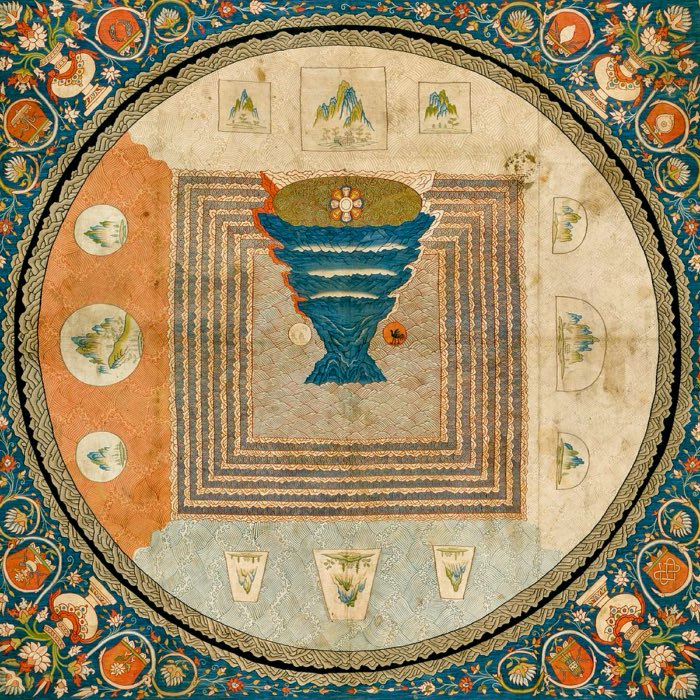



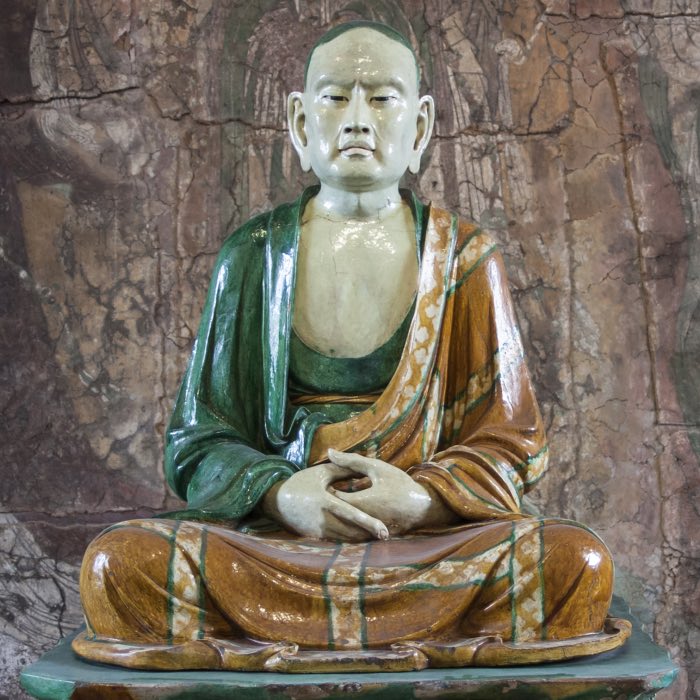







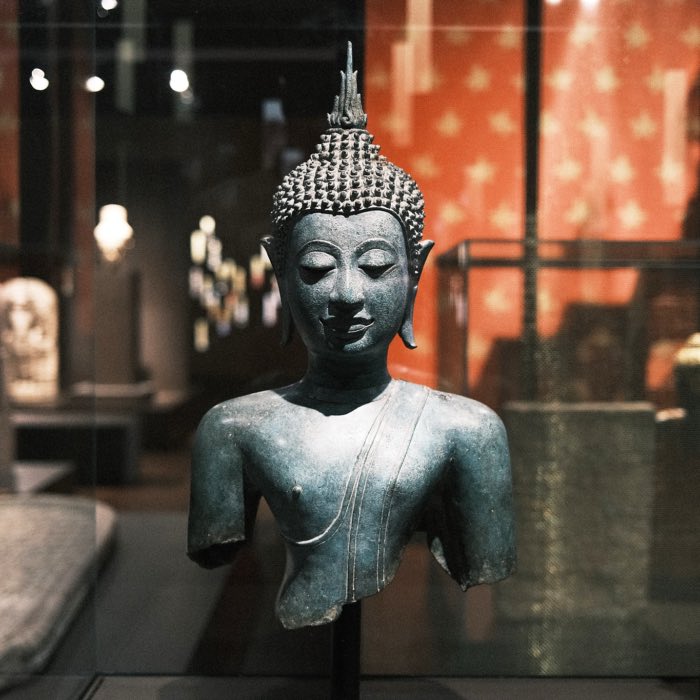
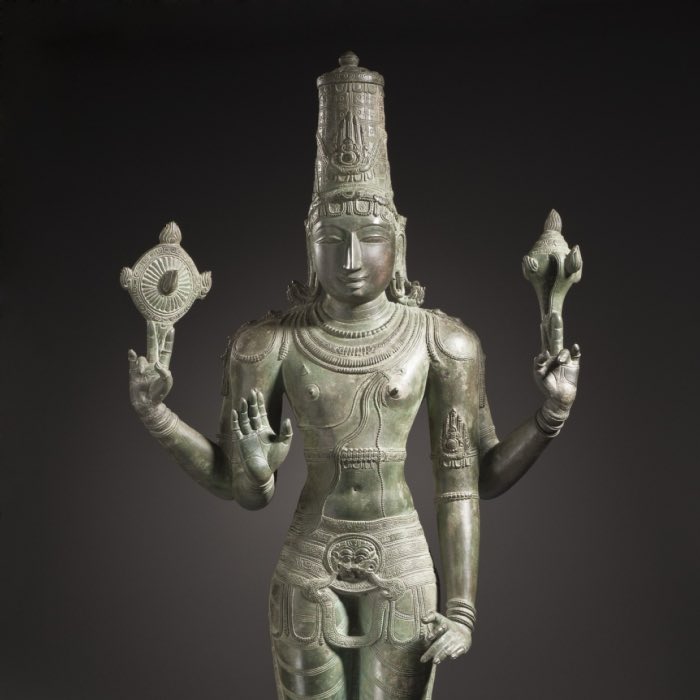






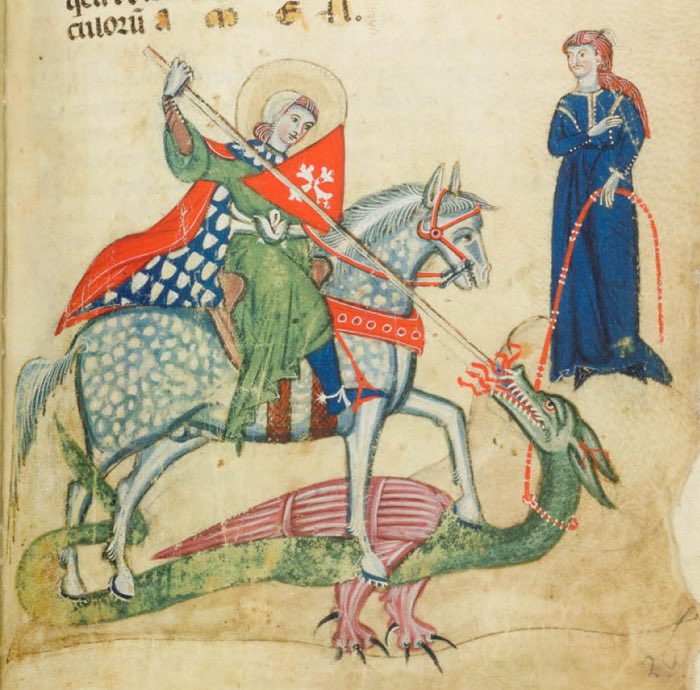













comments